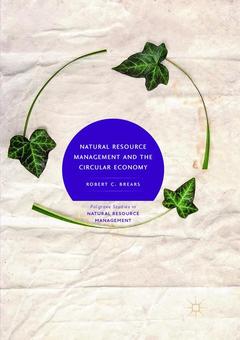Description
Natural Resource Management and the Circular Economy, 1st ed. 2018
Palgrave Studies in Natural Resource Management Series
Author: Brears Robert C.
Language: English
Subjects for Natural Resource Management and the Circular Economy:
Approximative price 179.34 €
In Print (Delivery period: 15 days).
Add to cartPublication date: 06-2019
349 p. · 14.8x21 cm · Paperback
Approximative price 179.34 €
In Print (Delivery period: 15 days).
Add to cartPublication date: 02-2018
Support: Print on demand
Description
/li>Biography
/li>Comment
/li>
This book provides insight into how governments are using a variety of innovative fiscal and non-fiscal instruments to develop circular economies with significant economic and environmental benefits. It emphasises the urgent need for these circular economies and to move away from our current, linear model that has led to environmental degradation, volatility of resource prices and supply risks from uneven distribution of natural resources.
Natural Resource Management and the Circular Economy illustrates how governments have promoted the development of an economy that can provide substantial net material savings; mitigate price volatility and supply risks; and improve ecosystem health and long-term resilience of the economy. Through a series of case studies, it details the various innovative policy instruments which can be utilised, including regulations; market-based instruments; incentives; research and innovation support; information exchanges; and support for voluntary approaches. The book also proposes a series of best practices for different countries, both developed and developing, who are implementing their circular economy.
Robert C. Brears is the founder of Mitidaption, Mark and Focus, and is a Director on the International Board of the Indo Global Chamber of Commerce, Industries and Agriculture.
Provides an overview of the circular economy and the challenges faced by the current linear economic model based on ‘take-make-consume-dispose’.
Uses mini-case examples of policies implemented around the world to illustrate the various fiscal and non-fiscal tools available for the development of the circular economy
Identifies a series of best practices for the development of a circular economy and encourage a life-cycle perspective on consumption of resources




